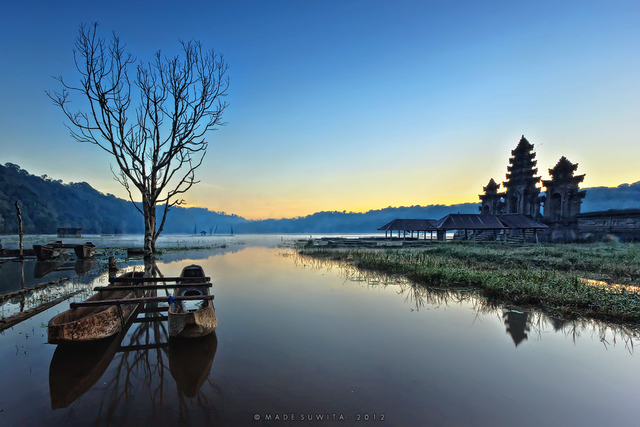
Lake Tamblingan is located at the foot of Mount Lesung in the village of Munduk. Tamblingan, together with Bratan and Buyan, are lakes that were once formed in the caldera of an ancient gigantic volcano.
In contrast to its more popular counterparts, Tamblingan is slightly off the tourist trails. The area surrounding the lake has been declared a zone of spiritual tourism and is protected by the government.
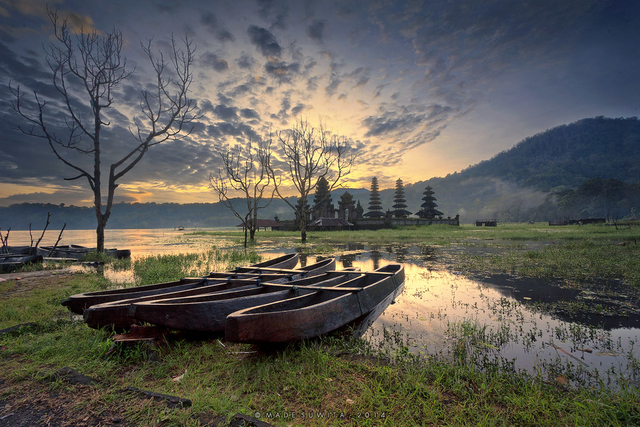
Depending on the season, the water level in the lake fluctuates greatly. During the rainy season, precipitation can flood the temples on the lake.
There are many Hindu temples around Tamblingan, which scientists believe originally belonged to the Tamblingan civilization, mentioned in the 10th century AD.
For some unknown reason, people from the original Tamblingan village migrated to four different places around the lake, creating new villages, collectively known as Catur Desa ("four villages"). These villages are Munduk, Gobleg, Gesing, and Umejero, which took on the responsibility of upholding the sanctity of Lake Tamblingan.
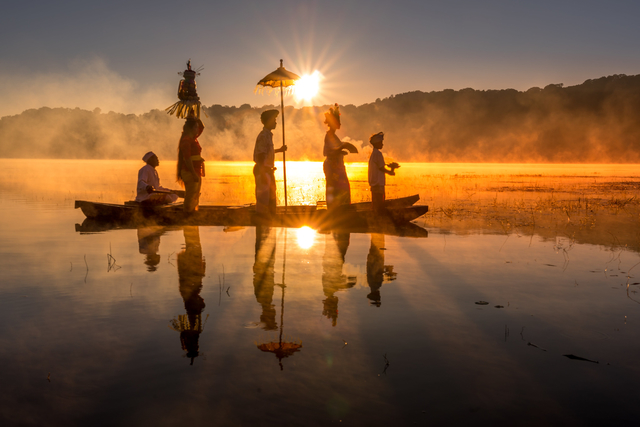
The name of the lake comes from two Balinese words: tamba, which translates to "medicine," and elingang, which means "remember" or "remind."
One legend tells that these four villages were once stricken by a contagious disease. A priest came to the lake and prayed for a long time, and from then on, the water from Lake Tamblingan was used as a medicine that defeated the disease. As a sign of gratitude, the inhabitants of the four villages began to build numerous temples around the lake.
Around the lake, there are a total of 11 temples, including Dalem Tamblingan, Endek, Ulun Danu, Sang Hyang Kangin, Sang Hyang Kawuh, Gubug, Tirta Mengening, Naga Loka, Pengukiran, Pengukusan, and Pura Embang.
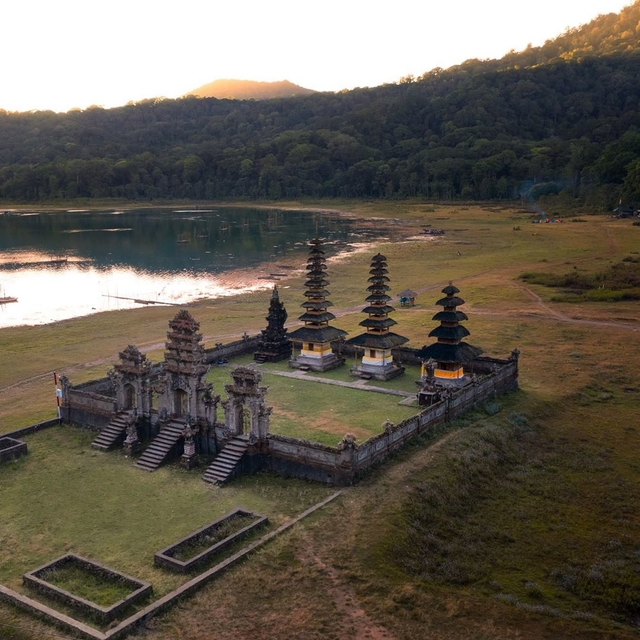
The most famous and largest of the lake's temples is Pura Ulun Danu Tamblingan. Depending on the water level in the lake, it can either be on dry land or submerged, giving it a mystical charm.
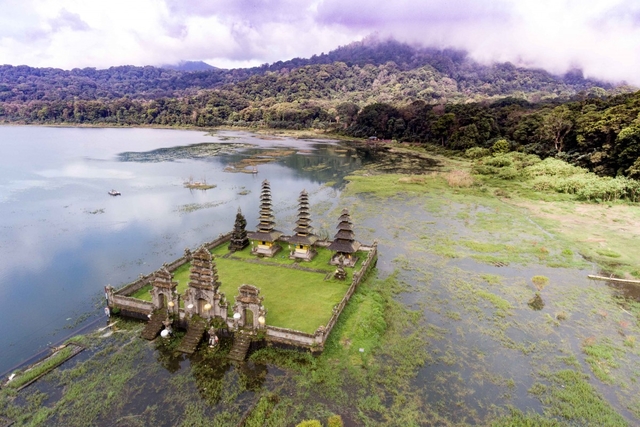
If you want to take the most impressive photos of this temple, it's best to come here at dawn when a mist hovers over the surface of the lake.
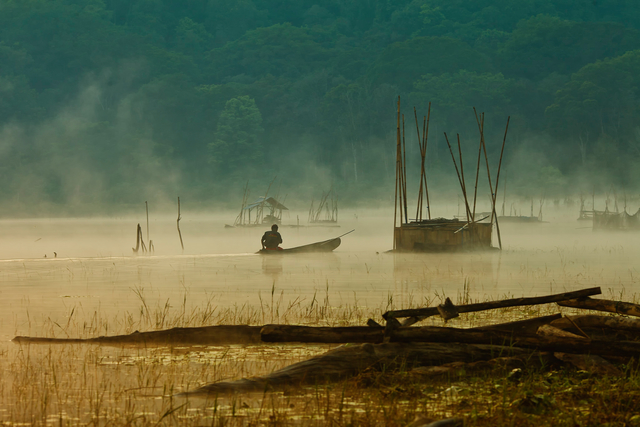
On the southern shore of the lake, there is a camping site where you can spend the night in a tent and admire the night sky above. There aren't too many tourists at the campsite. Nearby, local eateries are selling affordable food, fresh mandarins, and strawberries. Just don't forget to bring warm clothing to feel comfortable at night.
Since the lake is located over 1000 meters above sea level, even on a hot day, there is a pleasant coolness here.
The locals offer jungle treks around the lake and kayaks for tourists to swim. On some treks, mountain trails take travelers all the way to Jatiluwih, famous for its rice terraces.
You can add one right now!